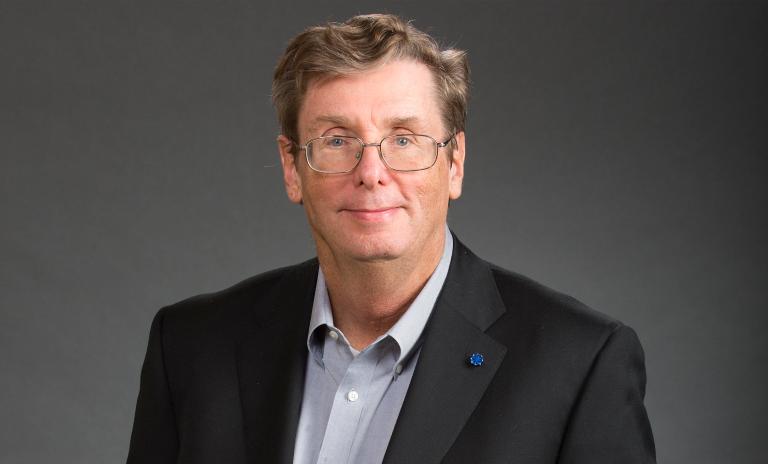How evolution drives success in the digital era
![{[downloads[language].preview]}](https://www.rolandberger.com/publications/publication_image/Think_Act_Magazine_Darwinism_Cover_EN_download_preview.jpg)
Change. Survive. Thrive. What your company needs to know to prosper in the digital age.



Innovation is hard. And doing innovation over and over again is even harder. SRI International (short for Stanford Research Institute) has made serial innovation a part of its DNA. In many ways, SRI has made an outsized contribution to the success of Silicon Valley and companies like Apple. Its innovations have become a part of our daily lives: examples include the computer mouse, Siri, LCD technology, HDTV, and robotic surgery.
But things were not always that great at this innovation powerhouse. Go back to the mid-1990s and the Silicon Valley-based research giant was on the verge of bankruptcy. That's when Curtis Carlson took over as president and CEO. Over a period of 16 years he turned the floundering organization into a formidable research powerhouse churning out one game-changing innovation after the other. Under Carlson, the loss-making SRI turned a corner, eventually tripling its revenues.
But how did Carlson make SRI a serial innovator? There was no magic bullet, he says. It all came down to a rigorous innovation process and methodology. In this interview with Think:Act, Carlson, who retired from SRI in 2014, talks about innovation and how to make it work.

Think:Act: You've been watching the innovation landscape for a very long time now. What are your observations on how the innovation game has changed over the decades?
Curtis Carlson: In some ways, it hasn't changed very much. If you go into big companies, university tech transfer organizations or most incubators, the performance is pretty good. If you look at the indices, for example, the number of new companies in America since the middle 1980s, in spite of 300 university entrepreneurial programs, 6,000 professors, 1,600 incubators and billions of dollars of new government funding, the number of growth companies has actually gone down by about 30%. The reason for that is a lot of the same problems exist. The basic thing is people really don't focus on the customer. It sounds almost ridiculous at this point. The thing that has changed is the awareness this is a problem that needs to be addressed. And there are different methodologies, where people are trying to put some kind of structure on the problems. That wasn't true so much 10 years ago. At SRI, we tried every methodology you can imagine, and we read every book, and they all failed. They are too complicated, too academic, they don't work.
You've got to create a very simple, high productivity environment and make it work. It's got to embrace the right human values. In the world we're in, human values are even more important: respect, integrity, trust.
"Innovation is about finding faint signals in a sea of noise."
We see most organizations struggle with innovation. But SRI has been churning out game-changing innovations over and over again. How do you turn an organization into an innovation machine like that?
You have to empower the team. If you want the best people to be motivated, they want a big challenge; they literally want to change the world. But most people don't know how to do that. And organizations don't support them in doing that. So the SRI's Value Proposition Framework (See SRI's Value Proposition Framework) we put in place did those things.
Every year, we'd be working on hundreds of research projects, and maybe a dozen possible disruptive ones. Every year, we would spin out a couple of companies, and every 3-4 years, one of them turned into a big success. So it's our process and our people that makes that possible.
The opportunities are there in the world. We train people in how to identify the opportunities that are interesting to us as well. That's part of our value creation playbook. So we have a methodology we give to everybody. Lots of people in Silicon Valley will have more resources than we'd ever have. But if we can be 2-10 times more efficient at value creation, we can compete with anybody.
And the third piece is our values – respect, integrity, trust. They were fundamental and they couldn't be compromised, because it destroys the magic we're trying to create.
Companies struggle with embedding this innovative mindset throughout the organization, as opposed to having it only in isolated pockets. How do you go about institutionalizing innovation across the entire organization?
The answer is we never did. It was kind of lumpy. Some people were more successful at doing this than others. But everybody knew the definition of a value proposition (See SRI's Value Proposition Framework). So even if they struggled on how to answer those questions, they knew at some point, they had the answer to those questions. It's not about perfection, you'd like it to be. What we discovered is even having a fraction of our staff really know how to do this was transformative. So we took an organization that had been declining for 20 years. One more year and we would have gone bankrupt. Same people, same technology, we changed the way they worked, how they collaborated, gave them these tools, and we created all the value and learned how to do it systematically.
"If you want the best people to be motivated, they want a big challenge; they literally want to change the world. But most people don't know how to do that. And organizations don't support them in doing that."
At SRI, how did you identify the problems to be solved? It looks like a lot of them were not about the customer's need at that time. They were a bit futuristic.
That's true. People have known that it would be nice to have a computer that could do things for you. So that's an old idea. That's locked into the future. So the question is, when will we have that, and what would it take to have that? People would be working on things that were pieces of that.
It took us many years to get to the point where we could do Siri. We were working on pieces, and people were doing a lot of things and they were meeting. At some point, we realized that if we assembled the right team, we could actually make a really significant advance that would put us in a position to do Siri.
Most problems today are multidisciplinary. You have to have the teams in the room that have the right disciplines. So our process of getting together and having people present what they're doing in ways that relate to each other, they learn, 'oh, you can do that, oh, he can do that'. You begin to see that we could actually put the pieces together to solve multidisciplinary problems.
So it's all things that any company could do. They had more resources than we did. Their people were just as smart as our people. Innovation is about finding faint signals in a sea of noise. The world is confusing. And you are looking for those little clues. Then you ask yourself, what are you actually doing? You are learning, searching and creating. So innovation is really a learning science. It's actually how you create knowledge.
While talking about the process for innovation, you once said: all top-down is stupid and bottom-up is chaotic. So where does the sweet spot lie?
My job at SRI was to be the champion for our staff and our process. I was trying to always push the decision down, where people had the knowledge to make the decisions. If I were the person making the decisions, SRI would be a pretty dumb place. How can we develop a process that liberates the genius of the folks who actually know what's going on? When people came in, the first question I would ask them is would they be the champion for the idea. We expect you to drive the project. If you don't have a champion who's committed and passionate about the project, it's not going to be successful. After a while, we collected a whole bunch of people who wanted to work that way. When you're around people like that, it's inspiring.
When you have this innovation machine, there are bound to be some dead ends: things you explore, and they never go anywhere. How did you deal with them?
Failure is an interesting thing. I never want to be the person who said no to a project. My expertise – what I thought I was bringing – was the ability to help people be engaged. So the goal was to have the teams be able to decide themselves, whether it meant it was right to go forward or stop. We ran the process by standing up and presenting. If people couldn't solve the problems and basically address all the parts of the working hypothesis, it became pretty obvious to people and it would just kind of go away. So it wasn't like management was coming in and saying, this is good, this is bad, that's terrible. You want the organization to make 90% of those calls. And that's what happened.
There's a secret though. If you work on important problems, most people don't want to do those important things. It seems scary, it will take too long, too much risk. But there's magic in poking around important problems. And the magic is if you do the right things. So when you start, let's say often the future is Siri, personal mobile assistants. Now, we didn't know about Siri, we just knew mobile assistants. There are lots of things you can do in between that in terms of simple little things you can automate, parts of speech recognition, a lot of things you can do on the journey. But in terms of solving the particular problem with personal assistants, when we started, we didn't know very much.
So the question is, can you go between where you are, which is not knowing very much, to a solution fast enough? The number of solutions around important problems is so large, we very often ended up in a good place. If you do the right things, focusing on what seem like almost impossible problems really has, in some ways, the least risk. Certainly doing incremental things that don't matter is the most risky thing you can do.

![{[downloads[language].preview]}](https://www.rolandberger.com/publications/publication_image/Think_Act_Magazine_Darwinism_Cover_EN_download_preview.jpg)
Change. Survive. Thrive. What your company needs to know to prosper in the digital age.
Curious about the contents of our newest Think:Act magazine? Receive your very own copy by signing up now! Subscribe here to receive our Think:Act magazine and the latest news from Roland Berger.
